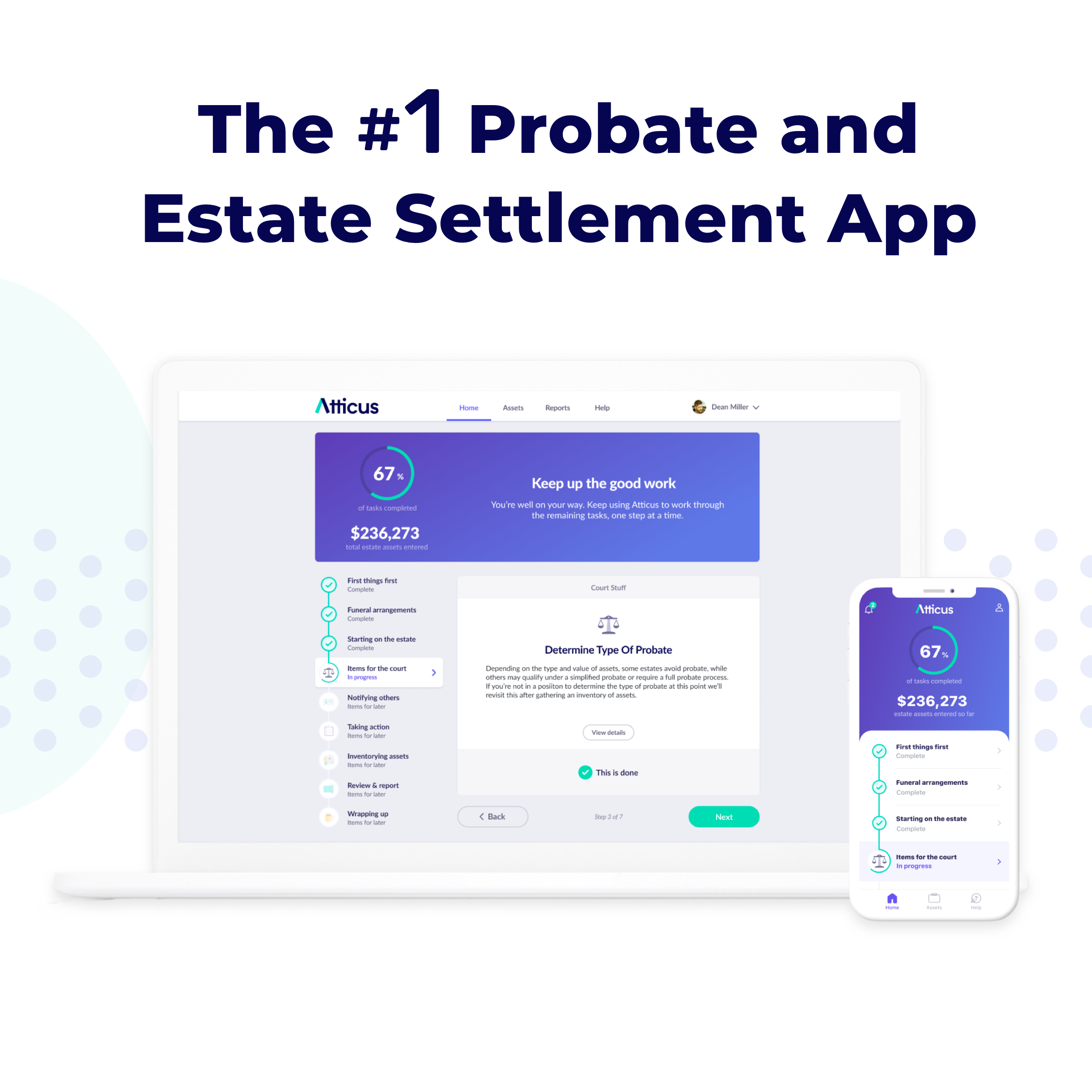


The implementation of K-12 curriculum in the country drew negative reactions from various societal groups. Since 2011, critics have been very vocal on their primary concerns. They insist the government isn’t yet ready for this new system and that this is more of additional burden to students and their parents.
Despite calls to suspend the program, the government remained firm saying this new educational system offers opportunities for Filipino students and the national economy.
For its part, the Department of Education (DepEd) stresses that the country is prepared for a big shift in education system. In fact, it has worked to fulfill the gaps on the number of classrooms, teachers, and textbooks. Also, it has finished the planning phases along with stakeholders.
But what does K-12 scheme really has to offer to students?
To prove that K-12 system is more than just adding two more years to high school, below are three of the many practical benefits of schooling under a 13-year education cycle:
The government believes that K to 12 curriculum in the Philippines will put Filipino students at par with the rest of the world. Truly, investing in education is the key toward reaching national growth and development.
Contact us for more information.

There is undeniably a challenge that teachers are facing as more young students drop out of high school without graduating. As parents, educators, employers or even students, it is very important to understand what an education can do for an individual. Keep reading to learn more abut the benefits of K12 education.
School is a major agent of socialization. Young children are first introduced to the socialization process by their close family and quickly move to a broader circle thanks to school. The educators function as role models and as authority figures while other students become peers. Without the positive influence of the educational institution, an individual would encounter difficulties along their socialization process. Someone who does not go through a successful socialization process might have a hard time fitting in at work and in society later in life. High school is a very important part of this process as students get older and start forming social cliques. Missing out in this process increases the risks of falling through the cracks of society.
School teaches students to recognize authority figures. A student who respects their teacher and other educators at school will easily adapt in the workplace and in other aspects of adult life. A young person who does not have this type of structure in their lives is more likely to be disrespectful of the law or unable to follow guidelines at work. These basic skills are absolutely necessary in order to become successful as a working adult or even to form a healthy household.
Basic skills such as reading or writing are some of the main benefits of K12 education. Students who drop out of high school often do not fully master these skills. Educators are facing a real challenge with getting their students up to a decent level in these areas. Reading and writing are skills that are much harder to acquire as an adult. Not being able to read and write makes simple things we do every day a lot harder than they should be. Adults who do not master these skills usually have to go through the process of learning how to read and write before they can find a good job.
Acquiring basic math skills is another benefit of getting a good education. These basic skills are not always fully mastered by students who choose to drop out and can keep them from managing a budget for their household later in life. Someone with an high school education should be able to balance their budget, look for the best prices when shopping, figure out what the best paying job is or fill out their taxes properly. These things can seem very simple to someone who has a good grasp over these skills but things become much more complicated for students who did not receive a solid education in this area.
General knowledge is another priceless one can get from an education. The knowledge of history, geography, science or literature can greatly enrich one’s life. There is no material way to measure the value of this type of knowledge but someone who learns these things will probably feel more fulfilled and want to keep learning new things throughout their entire life. Someone who does not acquire this desire for learning and general knowledge will probably never discover the richness of other lifestyles and cultures.
A school offers a lot more than knowledge. For instance, some schools give students the possibility to see counselors. Talking to a caring adult who can offer practical solutions can greatly help a young students make the right decision. A career counselor can for instance help a student find the ideal career and take all the steps toward getting their dream job. Someone who drops out of school will probably end up taking the first job they can find and might not find fulfillment in their career. Getting a K12 education opens new doors, including the possibility to go to college. Getting a college degree significantly increases one’s chance of finding a higher paying job. Students will get the opportunity to build a network, acquire more skills and find a career they really love. Not completing high school means not getting access to all these great opportunities.
Obtaining a high school diploma will make a real difference on the job market. An employer will be more likely to hire someone who completed high school regardless of the job one goes after. Employers usually assume that someone who completed high school has some basic skills necessary for the job, can communicate, get along with others and do what they are supposed to. A candidate who cannot say they completed high school will have less chances of getting a good job because employers will assume there is a negative reason behind them dropping out of school, such as not being able to commit to anything, socialize with others or show respect toward authority figures.
It is never too late to get a K12 education. There are many programs designed to help adults or students who dropped out graduate from high school. Getting an equivalency diploma can help one get a better job or even go to college. There are plenty of programs that offer nigh classes for adult education and a student can actually graduate in six months. The schedules are designed to allow adults who have jobs attend classes. Taking online classes is another good option for someone who needs a more flexible schedule or cannot drive to an adult education center.
In the end, there are many benefits of K12 education, including basic skills such as being able to read, write, count, communicate and interact with others. Getting a high school education can help one find a good job, adapt in the workplace, become a stable adult and raise a family. As a parent or educator, it is your role to do your best to help young students understand the importance of what they do in school.
There’s a growing need for both security and speed in application development. DevSecOps introduces security earlier in the SDLC to ensure secure code.

Comparing the speed of software development today to even just a decade ago is a bit like comparing a bullet train to a bicycle. With CI/CD and DevOps now mainstream, it’s faster by orders of magnitude. According to a 2015 report from Puppet Labs, “high-performing IT organizations deploy 30x more frequently with 200x shorter lead times.”
And that was five years ago. It’s even faster now. How is security supposed to keep up with that?
Joe Jarzombek, director of government and critical infrastructure programs at Synopsys, is glad you asked. The short answer is to embed security into DevOps throughout the software development life cycle (SDLC), making it DevSecOps. The way to do that is with a combination of improved security culture, automated tools, and processes that, as he puts it, “reduce the time and effort needed to address risks attributable to exploitable software.”
There’s plenty of detail involved in achieving that, of course—which Jarzombek covered in a recent webinar titled “Key Steps for Integrating Software Application Security Testing in DevSecOps.”
While the webinar is aimed at defense contractors, the DevSecOps principles apply in any industry.

One of the most important steps, which has become a mantra at security conferences, is to “make the secure way the easy way.” In the case of DevSecOps, that means although security has to be everybody’s responsibility, not everybody has to be a security expert.
“Using tools with security checkers ‘under the hood’ enables team members to catch security defects like using a spellchecker,” Jarzombek said. “As you’re typing, it gives you a warning and shows you the path to mitigation. Security checkers drive savings in time and resources while rapidly mitigating risks even if developers don’t have full knowledge of the security defect itself. The tools do it for them.”
The goal of embedding security testing into DevOps is “software assurance,” Jarzombek said, which refers to the level of confidence that software will function as intended and is free of exploitable vulnerabilities.
“The fact is that software is processing data that we are very concerned about, and we want to make sure that your systems, through the software that enables and controls them, are not leaking data,” he said.
Of course, no software is entirely free of vulnerabilities, so another key to software assurance is to set priorities—to find and fix defects that are most likely to be exploited by attackers and/or could do the most damage.
One way to do that is to look for the known vulnerabilities and weaknesses in the common vulnerabilities and exposures (CVE) and common weakness enumeration (CWE) lists, which are part of the national vulnerability database (NVD), the U.S. government repository of standards-based vulnerability management data maintained by National Institute of Standards and Technology (NIST).
Even those lists need to be narrowed to the most important threats, however. And as Jarzombek noted, there are important differences between weaknesses, vulnerabilities, and exposures.
The goal of an attacker is, of course, to try to exploit any or all of those. Among common attacks are cross-site scripting (XSS), which is improper neutralization of inputs during webpage generation, and SQL injection, which is an improper neutralization of special elements used in a SQL command.
“But this is where tools come into play,” Jarzombek said, noting that good testing tools can flag hundreds of known weaknesses or vulnerabilities included in the Object Management Group (OMG) automated source code quality measures (ASCQM). The ASCQM categories include:
“With security checkers under the hood, you don’t need to know all these,” Jarzombek said. “You just have to treat them as quality defects and process them. That’s the beauty of it.”

That doesn’t make everything simple, however. Jarzombek said the complexity of modern applications, along with the speed of development and delivery, means automated testing tools are mandatory for security to keep pace.
“Modern applications are a technology stack that includes data storage, data access, frameworks, business logic, UI/API, and cloud/mobile,” he said. “Software is mission-critical infrastructure. There is more complexity, including languages, platforms, open-source, third-party licensed code, proprietary code, containers, and cloud.”
“That level of complexity makes it very challenging if you don’t bring automation to the table,” he said. “For example, an application with 20 GB of source code could have almost 70% open source, with 67% reciprocal licenses and 2% permissive licenses, proprietary code of 30%, and licensed third-party code of 6%. Those could have vulnerable components including 6 high severity, 13 medium, and 19 low.”
And the importance of finding and fixing those vulnerabilities has never been greater since applications have become the primary attack surface. Jarzombek said multiple studies have found that about 84% of all cyberattacks happen at the application level and that 90% of exploitable vulnerabilities are in applications.
Yet organizations are still spending more on network security. “You do need to protect your networks,” he said, “but we need to put more effort into the security of the applications themselves. Hackers are targeting the application vulnerabilities because we make it easy for them.”

That’s in part because applications don’t age like fine wine. “They age more like milk,” he said. “Over time, we discover more and more vulnerabilities. Once it’s deployed, you still have to keep checking and doing updates. So it’s key for DevSecOps teams to use automated software vulnerability scanning to keep up with it. There’s really not another way around it.”
The Synopsys suite of software testing tools covers the entire SDLC, Jarzombek noted. Those tools include:
“It’s different tools for different stages of the SDLC, and the beauty of this is when you bring in best-of-breed tools, you get the best-of-breed overall solution,” he said.
Those tools are integrated into the Polaris Software Integrity Platform™ that includes Code Sight™, the IDE plugin, which brings together both Black Duck SCA and Coverity static analysis.
Of course, there are multiple tools on the market—some of them free. “But remember, not all tools are created equal,” Jarzombek said. “Just because you have a tool that’s in one space, that doesn’t mean it looks for everything. In fact, if you say which tool you’re using, many people can tell you they know what you’re not looking for. You should know the capabilities of the tools you bring to the table.”
Finally, he said, effective DevSecOps requires a cultural shift. “DevOps teams must own security in the same way that they own development and operations,” he said. “Application security must match your release and test paradigms. It’s not an added thing; it’s just the way to do business. It has to be embedded into what we do.”
Doing DevSecOps right means “integrating security into defect tracking and postmortems,” he said. It should include:
Yes, all this takes time and money. But it’s an investment that will pay dividends. “It’s much more cost-effective than reacting to vulnerabilities, incidents, and breaches after the software has been deployed,” Jarzombek said. “DevSecOps teams should only be dealing with new threats for vulnerabilities that weren’t previously known. They shouldn’t have to be reacting to things that have been known but somebody just didn’t address them in development.”
Which is another way of saying that DevSecOps is the path to building secure, high-quality software faster.
When COVID-19 prompted lockdown measures across Europe and North America in March 2020, the impact on brick and mortar establishments was immediate. From sprawling factories to mom-and-pop corner shops, the pandemic drove customers and employees back into their homes and forced business owners to reconsider their future.
Many of these businesses turned to online education as a way to keep their business afloat. In early 2019, the online course industry was forecast to be worth $300B by 2025. The pandemic has rapidly accelerated this timeline, as entrepreneurs, businesses, and teachers pivot online – resulting in a 221% surge in new course creation in the early days of the pandemic.
Based on this early boom, we asked a few key questions:
In the trend report that follows, we dig into these questions and more.
This report covers key insights in the online course industry, based on the first-touch reactions to COVID-19 as well as the slow-burn trends that followed.
To gain these insights, we looked at two distinct time periods. Data from March 15-31 showed the immediate impact of pandemic-related lockdown measures, while data from April 1-June 30 revealed a snapshot of continued trends as the world began settling into a new normal. To measure the growth of these periods, we compared both to average benchmarks within a 6-month period prior to March 15.
Across these three timeframes, we’ve measured new course creators, new student enrollment, and new courses. Note that throughout this report when we reference course creation growth, that figure represents only courses with 10 or more student enrollments to ensure numbers aren’t inflated by empty courses.
While this data was collected from Thinkific’s business model specifically, and therefore may differ from other online course providers based on a range of demographic factors, it offers a snapshot into the trends of the online course industry based on one of the world’s leading online education platforms.
In the early weeks of COVID-19 lockdown measures, we saw a 221% increase in new course creators on our platform. These figures represent a range of creator types with a variety of goals, including but not limited to:
Considering many creators built more than one course, we tracked a 368% increase in new courses created on the platform in those final two weeks of March.
While we measured growth across every category, three industries stood out as first adopters:
We also tracked a combined 798% growth in courses where creators identified as Other or where their industry was Not Captured.
While a high proportion of pre-pandemic course creation was concentrated in North America, the online course industry growth that followed was global.
While many countries saw a dramatic spike in course creation in late March and a steady levelling off in the months that followed, each of these top 15 countries settled into a significantly higher course creation rate – ranging from 115% to 263% higher than pre-pandemic averages. This demonstrates that around the globe, online courses continue to be a powerful tool as the world settles into a new normal.
It’s one thing for entrepreneurs and businesses to move online, but student engagement is another question altogether. With the pandemic driving everyone indoors, what were potential students doing with their time?
In the second half of March, student enrollment grew by 217%. While Russia, the United Kingdom, and the United States saw massive growth exceeding 200% of their pre-pandemic rates, the highest concentration of new students came from the United Arab Emirates as the Mohammed Bin Rashid University of Medicine and Health Sciences (MBRU) launched their interactive MBRU Community Immunity Ambassador Program online, attracting hundreds of thousands of students and catapulting their growth rate by more than 53,000%.
Certain industries stood out as clear favorites with huge jumps in student enrollment:
| Arts & Entertainment | 936% |
| Fashion & Beauty | 691% |
| Health & Fitness | 516% |
| Education | 343% |
| Career Development | 340% |
| Business & Marketing | 279% |
| Other | 243% |
| Software & Technology | 234% |
| Personal Development | 155% |
| Not Captured | 139% |
Software & Technology earns an honorable mention here; while enrollments grew 234% in the early weeks of lockdown, it skyrocketed by more than 1150% in the months that followed. This may come as little surprise, with many looking to expand their skills in the remote workforce where technology-driven roles abound.
So far we’ve touched on a handful of examples where metrics have stood out for their growth in April-June as much as for their initial figures in late March, but let’s dig in further to see what trends emerged in the months immediately following global lockdown measures.
From April-June, student enrollment growth remained relatively steady at 200% above pre-covid figures, showing that the increased student demand for online courses was here to stay.
Most industries showed continued growth in student enrollment:
| Software & Technology | 1153% |
| Health & Fitness | 949% |
| Fashion & Beauty | 792% |
| Other | 778% |
| Arts & Entertainment | 499% |
| Education | 493% |
| Business & Marketing | 411% |
| Personal Development | 408% |
| Not Captured | 101% |
| Career Development | 66% |
All but three of these industries saw significantly more growth in this period than they did in the initial post-lockdown growth phase. This speaks volumes about the trend of student demand towards courses that align with a post-pandemic landscape. For example, Software & Technology and Education offer key opportunities to meet the needs of distance learning and an increasingly remote workforce, while students who are looking for home fitness options are increasingly turning to online Health & Fitness courses.
Where student demand has increased over time, course creators have risen to the challenge as new course growth has continued across each category at considerably higher rates than before the pandemic. Consider for example that Business & Marketing has the lowest growth rate of all defined categories at 261% of its pre-covid rates, while Education and Arts & Entertainment lead the charge with growth rates of 732% and 722% respectively.
Despite these figures, student enrollment figures across every country and industry still outpace that of new course creators, spelling continued opportunity for current and aspiring course creators eager to fill the gap.
These figures paint a picture of a thriving online course industry, where entrepreneurs are finding new opportunities to market their skills despite the economic challenges brought on by COVID-19. This explosion of online course creation isn’t a lockdown-driven one hit wonder; it’s a trend that continues to pick up steam as entrepreneurs, businesses, and educational institutions turn online courses into their solution for an uncertain future.
As the world collectively stares down a landscape of revolving distancing measures, economic shifts, and an increasingly distributed workforce, some see opportunities for innovation. Whether it’s the chance to leverage your talents into your income, make the move into a new career, change the way we think about education, or streamline the way businesses onboard employees and interact with clients, the pandemic has paved the way for the world to step outside routine and explore new and better opportunities – and online courses are the vehicle for success.

There is undeniably a challenge that teachers are facing as more young students drop out of high school without graduating. As parents, educators, employers, or even students, it is very important to understand what an education can do for an individual. Keep reading to learn more about the benefits of K12 education.
School is a major agent of socialization. Young children are first introduced to the socialization process by their close family and quickly move to a broader circle thanks to school. The educators function as role models and as authority figures while other students become peers. Without the positive influence of the educational institution, an individual would encounter difficulties along their socialization process. Someone who does not go through a successful socialization process might have a hard time fitting in at work and in society later in life. High school is a very important part of this process as students get older and start forming social cliques. Missing out in this process increases the risk of falling through the cracks of society.
School teaches students to recognize authority figures. A student who respects their teacher and other educators at school will easily adapt in the workplace and in other aspects of adult life. A young person who does not have this type of structure in their lives is more likely to be disrespectful of the law or unable to follow guidelines at work. These basic skills are absolutely necessary in order to become successful as a working adult or even to form a healthy household.

Basic skills such as reading or writing are some of the main benefits of K12 education. Students who drop out of high school often do not fully master these skills. Educators are facing a real challenge with getting their students up to a decent level in these areas. Reading and writing are skills that are much harder to acquire as an adult. Not being able to read and write makes simple things we do every day a lot harder than they should be. Adults who do not master these skills usually have to go through the process of learning how to read and write before they can find a good job.
Acquiring basic math skills is another benefit of getting a good education. These basic skills are not always fully mastered by students who choose to drop out and can keep them from managing a budget for their household later in life. Someone with a high school education should be able to balance their budget, look for the best prices when shopping, figure out what the best paying job is, or fill out their taxes properly. These things can seem very simple to someone who has a good grasp of these skills but things become much more complicated for students who did not receive a solid education in this area.
General knowledge is another priceless one can get from education. The knowledge of history, geography, science or literature can greatly enrich one’s life. There is no material way to measure the value of this type of knowledge but someone who learns these things will probably feel more fulfilled and want to keep learning new things throughout their entire life. Someone who does not acquire this desire for learning and general knowledge will probably never discover the richness of other lifestyles and cultures.

A school offers a lot more than knowledge. For instance, some schools give students the possibility to see counselors. Talking to a caring adult who can offer practical solutions can greatly help young students make the right decision. A career counselor can for instance help a student find the ideal career and take all the steps toward getting their dream job. Someone who drops out of school will probably end up taking the first job they can find and might not find fulfillment in their career. Getting a K12 education opens new doors, including the possibility to go to college. Getting a college degree significantly increases one’s chance of finding a higher-paying job. Students will get the opportunity to build a network, acquire more skills and find a career they really love. Not completing high school means not getting access to all these great opportunities.
Obtaining a high school diploma will make a real difference in the job market. An employer will be more likely to hire someone who completed high school regardless of the job one goes after. Employers usually assume that someone who completed high school has some basic skills necessary for the job, can communicate, get along with others and do what they are supposed to. A candidate who cannot say they completed high school will have fewer chances of getting a good job because employers will assume there is a negative reason behind them dropping out of school, such as not being able to commit to anything, socialize with others or show respect toward authority figures.
It is never too late to get a K12 education. There are many programs designed to help adults or students who dropped out graduate from high school. Getting an equivalency diploma can help one get a better job or even go to college. There are plenty of programs that offer night classes for adult education and a student can actually graduate in six months. The schedules are designed to allow adults who have jobs to attend classes. Taking online classes is another good option for someone who needs a more flexible schedule or cannot drive to an adult education center.
In the end, there are many benefits of K12 education, including basic skills such as being able to read, write, count, communicate and interact with others. Getting a high school education can help one find a good job, adapt in the workplace, become a stable adult and raise a family. As a parent or educator, it is your role to do your best to help young students understand the importance of what they do in school.
For additional information about Keeping Pace, or to speak with the authors and project management team, please contact us at:
Evergreen Education Group
700 Main Avenue, Suite E
Durango, Colorado 81301
616-340-8066
John Watson
john@evergreenedgroup.com
Larry Pape
larry@evergreenedgroup.com
Butch Gemin
robert@evergreenedgroup.com
Lauren Vashaw

Settling an estate is no easy feat. Under the best circumstances, the process often takes 12 months to complete; with added complexities, duration increases.
The term “estate” refers to all of an individual’s assets and liabilities. Which means that “estate settlement” is the closing chapter in someone’s financial life.

The estate settlement process involves determining what assets were owned by the person that passed and placing a fair sentimental and financial value on them.
It also includes paying any debts and taxes that may be owed, and, ultimately transferring assets to the correct people or institutions in order to close out the estate.
Sounds pretty straight forward, right?
Beyond the procedural elements of estate settlement, there is also a significant emotional aspect. After all, a loved one has passed.
Even when expected, the passing of a loved one is heart-rending and can traverse a wide range of feelings.
Every family member assimilates the experience from their individual frame of reference, and these different perspectives can sometimes lead to emotional strife.
Layer the financial dimensions of estate settlement on top of the emotional context, and family dynamics can quickly turn to clashing factions.
Even among peaceful and agreeable siblings.
To help lessen the chance of long-term arguments, here are three proven ways to help keep family peace while also keeping pace throughout the process of settling the estate:
Like most relationships, communication is essential when it comes to working with family members in the estate settlement process. If you are executor, be the leader. Impartiality can be difficult, and staying cool is tough when emotions run high. However, by proactively communicating where things are with each step in the process, you can avoid unnecessary tensions and debate. The role needs a voice of reason, and you are it!
TMI applies in some situations, but not when you’re on point to lead an estate settlement. Keep your family up-to-date with your progress, challenges, and next steps in the process. This is even more important when you work through financial details. Absent information, people can come to inaccurate conclusions. By fully sharing details, you will help your family members feel comfortable.
Any of these themes – estate settlement, family dynamics, and financial activities – can be emotionally charged on their own; combine them and the result can feel like nuclear fission. Be mentally prepared in advance on how you can de-escalate discussions that elevate to debate or outright arguments. For instance, if you know one sibling is more sensitive to a particular topic, say whether you keep a family heirloom or sell it, have a conversation with that person in advance of the group discussion. If the group discussion heats up, plan a redirect question. Challenges are likely to arise, yet the more prepared you are, the better you can navigate each event.
By taking these steps, executors and heirs can help maintain peace among their family through even the most difficult of situations.
And at the end of the day, nothing honors a loved one or preserves their legacy more than everyone sticking together.
After all, that’s what family is for… especially through the hard times.
Atticus is the #1 leading DIY estate settlement & inheritance software helping individuals and their advisors bring a close to the financial life of a loved one.
Download the mobile app or create an account on web to get started today.